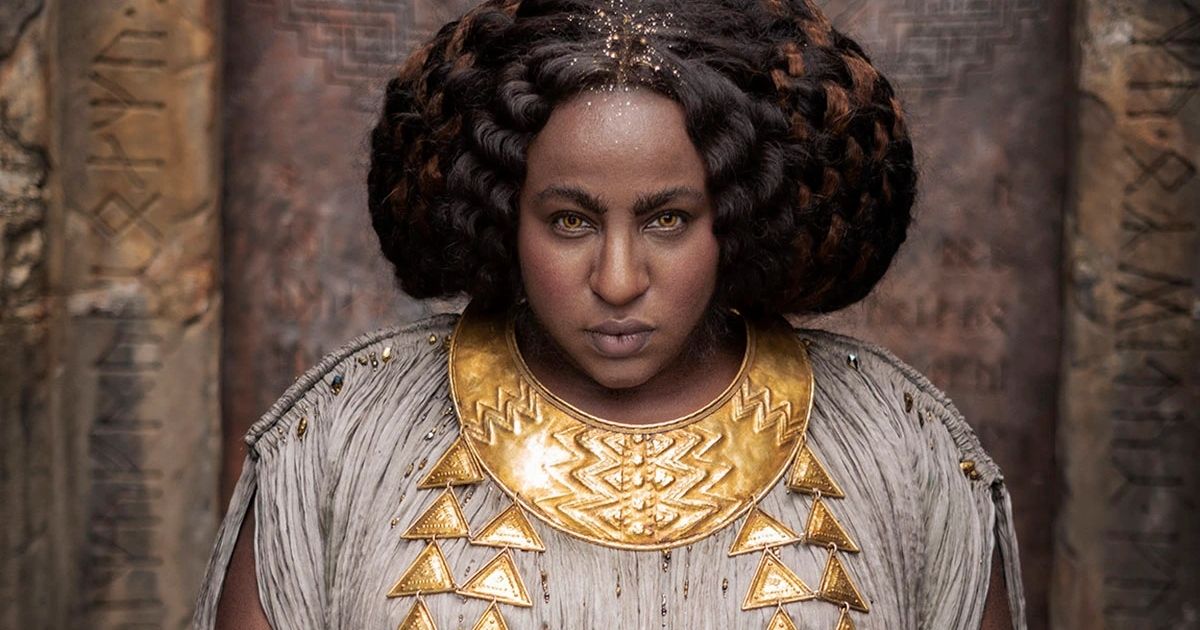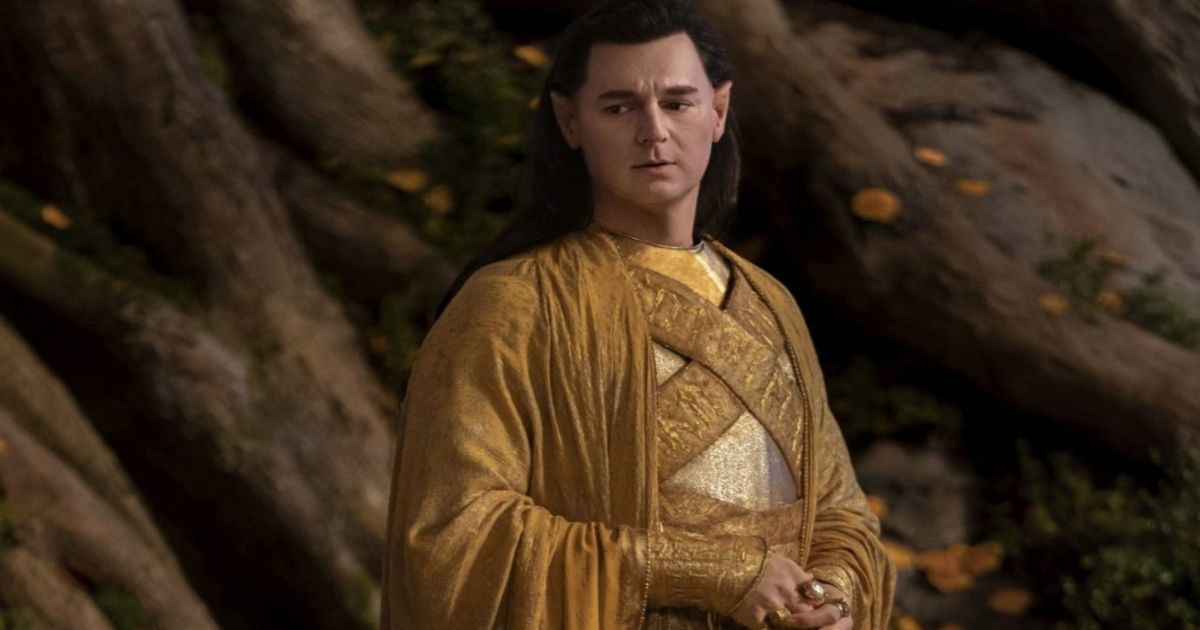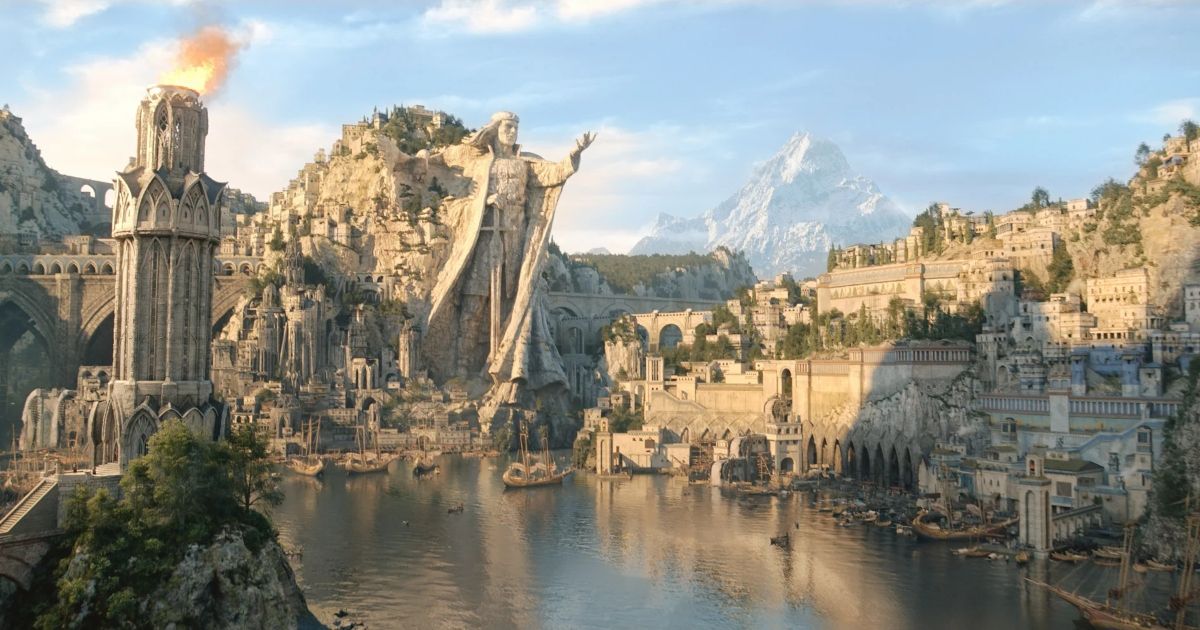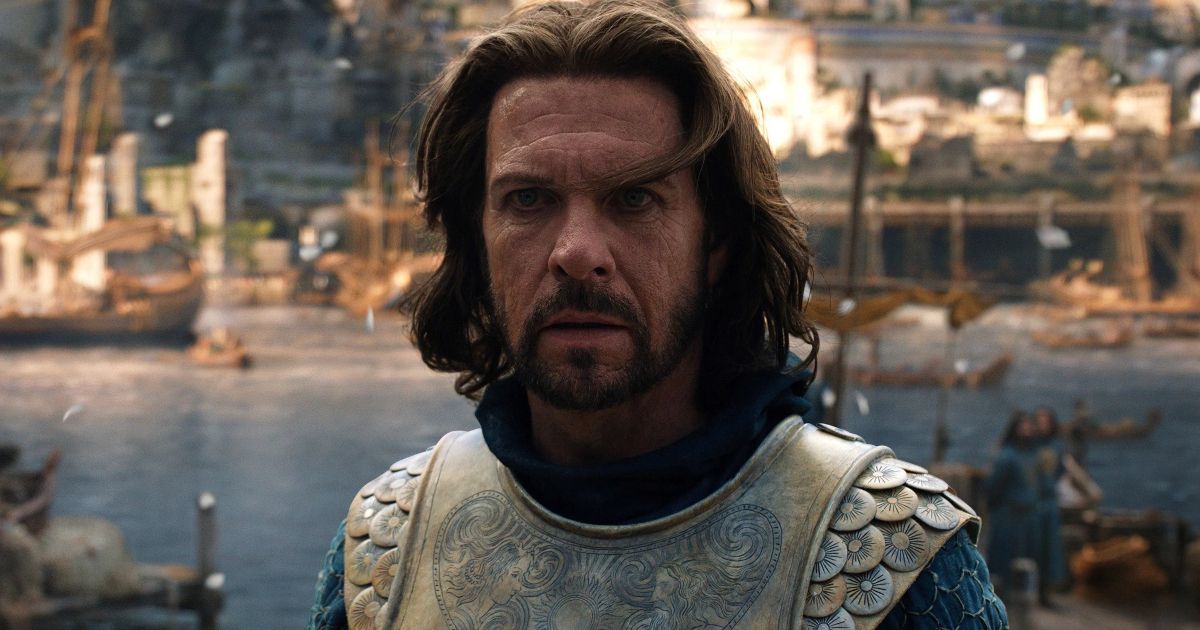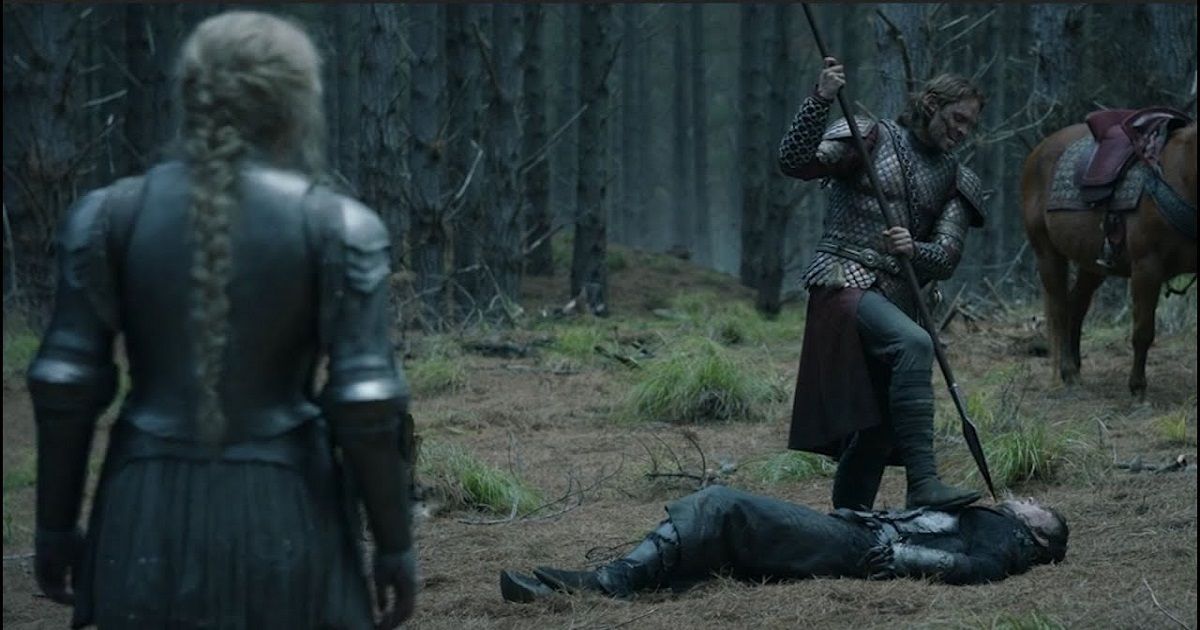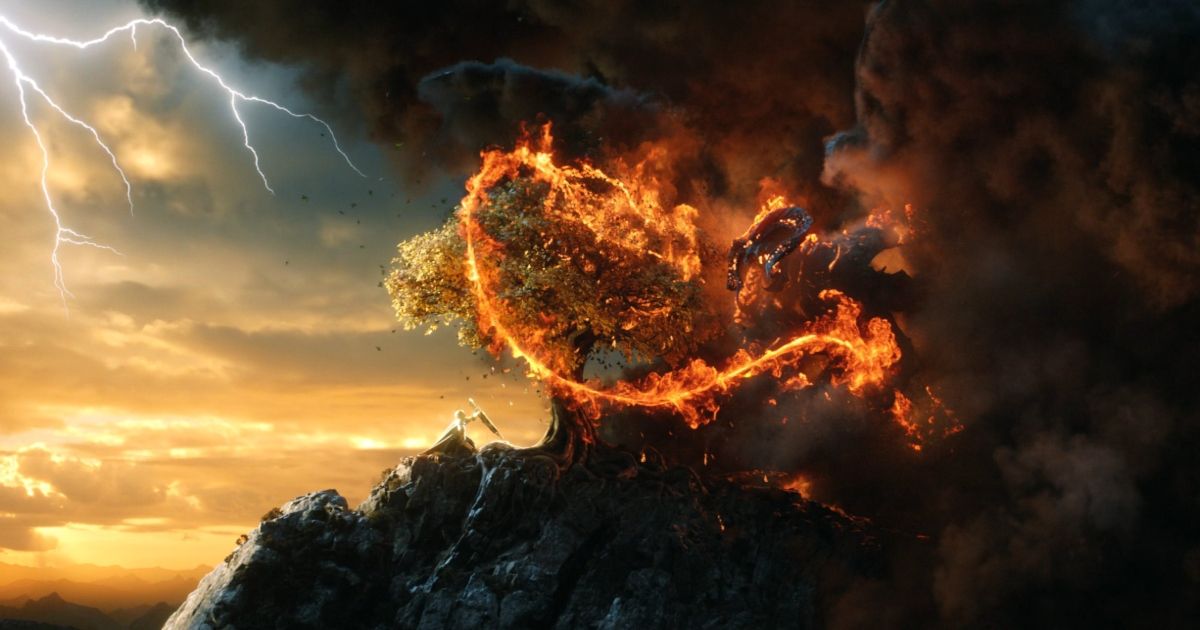The Lord of the Rings: The Rings of Power has been the recipient of a lot of hate online since it premiered on Prime Video last fall. Some of that negative reaction has been warranted, as some fans have not been happy with the quality of writing for the show nor the changes that have been made when bringing the stories of J.R.R. Tolkien to screen. Some of them, however, have been completely unwarranted and racist reactions that have argued people of color weren’t in Tolkien’s writing, so they shouldn’t be in the show. The latter is such a dumb take that we’re not going to engage with it any further.
It’s clear to see that The Rings of Power has left a lot of die-hard Tolkien and Lord of the Rings fans unsatisfied. The series, which is set in the Second Age of Middle-Earth, tells the story of Sauron’s rise to power and the legions of free peoples that united to stop him. The prologue of The Fellowship of the Ring depicts what will likely be the events of this show’s final season.
The series only has the rights to the stories within Tolkien’s core Lord of the Rings trilogy and the Appendices that are included at the end of The Return of the King, and as such it cannot pull directly from Tolkien’s other works such as The Silmarillion, Unfinished Tales or the History of Middle-Earth books. This has tied the hands of the creative team a bit, but they have still managed to deliver a series that keeps the heart of Tolkien’s work intact. Here are seven aspects of The Lord of the Rings: The Rings of Power that the show got right in its first season:
The Look and Feel of Middle-Earth
No matter how you feel about the writing or storytelling of The Rings of Power, there’s no denying that the show looks beautiful. It near-perfectly translates the beauty and elegance of Tolkien’s Middle-Earth to the screen, both while paying homage to the look of Peter Jackson’s films and bringing its own distinct flavor to the sets and overall design of the series. Whether it be the glorious Dwarven kingdom of Khazad-dûm, the poisonous ravage of Mordor, or the shores of Aman and the Blessed Realm of Valinor, the look and feel of Middle-Earth is more stunning than ever.
Looking even beyond the production design and visual effects, the cinematography of the series is also breathtaking. Most of the shots in the series present the story in a visually interesting manner, but there is also a handful that are true works of art, such as the establishing shot of the Two Trees of Valinor or the depiction of a nameless Elf facing off against a Balrog on a mountaintop.
The Music
Another key, yet often overlooked, aspect of building the atmosphere of a fictional world is the music. After Howard Shore did a phenomenal job with the music of Jackson’s Lord of the Rings trilogy, the bar was set high for whoever would step in to do the music for The Rings of Power. While Shore returned to compose the show’s opening theme, the rest of the music was written by the acclaimed composer Bear McCreary, who somehow managed to meet the sky-high expectations that had been set for him.
Throughout the entire series, the music of The Rings of Power never ceases to be awe-inspiring. It’s more than just various strings of pretty melodies, though. Whether it be for the heroics of Númenor, the darkness of Sauron or the mystery of Halbrand, McCreary meticulously crafted his score to allow for a variety of themes to be interwoven and twisted to serve different purposes. The story of the series is just as clearly presented in the music as it is on-screen, which speaks volumes about McCreary’s talents.
The Casting
The casting for The Rings of Power was a monumentally difficult task. Not only would the new actors joining the series need to have incredible acting chops to portray these Tolkien characters, but they also had to have the thick skin to deal with the relentless hate of internet trolls. On top of that, the cast of Jackson’s The Lord of the Rings is iconic, which leaves the new cast some massive shoes to fill. Whether it was with characters debuting on-screen for the first time, or characters that had to be recast from Jackson’s films, the performers chosen for The Rings of Power are perfect for their roles.
Morfydd Clark anchors the whole series as Galadriel, Robert Aramayo wonderfully embodies the kindness of Elrond, Ismael Cruz Córdova is one of the brightest spots of the show as the Elf Arondir, and the rest of the cast ranging from Lloyd Owen to Owain Arthur, Cynthia Addai-Robinson, Benjamin Walker and so many others are all excellent fits for their roles. A more-than-significant amount of our excitement for season two is based just on seeing them as these characters again.
Easter Eggs for Fans
Although The Rings of Power may shift the stories of Middle-Earth’s Second Age in some unexpected directions, the series has retained a desire to excite fans with connections to the larger world of Middle-Earth. Every episode of the series is packed with a number of Easter Eggs that are sure to please die-hard fans of Tolkien’s materials. Some of these references are much easier to spot, while others are slyly hidden in the deep background of certain shots.
Some of the more obvious references are the inclusion of Morgoth and the Two Trees of Valinor (Laurelin and Telperion) in the series’ prologue, as well as the statue of Eärendil on the shores of Númenor, which evokes the same look of the Argonath in The Lord of the Rings. Some of the deeper-cut Easter Eggs include the various depictions of Lúthien Tinúviel, both in statue and tapestry, as well as the appearances of the sword Narsil and the Dragon-helm of Dor-lómin among the heirlooms of Númenor.
Númenor
Speaking of Númenor, the depiction of the island kingdom of Men is also one of the best parts of The Rings of Power. The realm of Westernesse, as it’s also known, is one of the cornerstones of the overarching story of Tolkien’s Legendarium. The island was a gift from the Valar to the Dúnedain men of Beleriand as thanks for their part in resisting Morgoth throughout the conflict of the First Age and the War of Wrath. This kingdom is meant to represent Men at their height of power and prowess in Tolkien’s world. However, as time goes on, the Men of Westernesse falter, doubt the Valar and grow prideful, which eventually leads to their downfall.
The Rings of Power’s depiction of Númenor is everything it should be. The writing in that story is some of the strongest of the series, the visual depiction of the kingdom is spot-on, and all the actors involved are giving some of the best performances in the show. If you’re on the fence about watching The Rings of Power at all, the Númenorean aspects of the show alone make it worth the commitment.
Not Trying to Be Peter Jackson’s Films
The Rings of Power could have very easily been a cheap knockoff of the Lord of the Rings films that Jackson directed in the early 2000s. Thankfully, the creative team on the show has wisely made the decision to make their show notably different from Jackson’s films. While the visuals of the series certainly take some inspiration from the work done on the films, they never outright copy anything.
The same goes for the structure of the story and the general approach to the characters. Rather than constantly trying to remind fans of the movies they already love, The Rings of Power focuses on its own story and the way that story should be told. True, that story may be a little rushed and poorly executed at times, but that’s still better than a poor imitation of something that’s already been done before.
Willingness to Make Changes
As much as some die-hard fans refuse to accept it, changes need to be made when adapting any sort of source material to another medium, whether they be minor or major. Even Jackson’s Lord of the Rings films made some pretty significant changes to the story Tolkien wrote. Looking at how the stories of Middle-Earth’s Second Age unfold on the page, that would not have translated well to a series or film at all. It may work on the page, but there are some core changes that had to be made when adapting that material for The Rings of Power.
Whether it be the condensing of the timeline of events, which spans thousands of years in Tolkien’s writing, or the active role that Galadriel plays within the story, The Rings of Power has shown a consistent willingness to adjust the story where it is needed. Yes, this may displease some fans, but it puts the show on much more stable ground in terms of visual and on-screen storytelling. The creative team has proven that they aren’t afraid to make these kinds of changes in order to serve the story they are telling, which hopefully bodes well for the long-term quality of the series.
This story originally appeared on Movieweb


